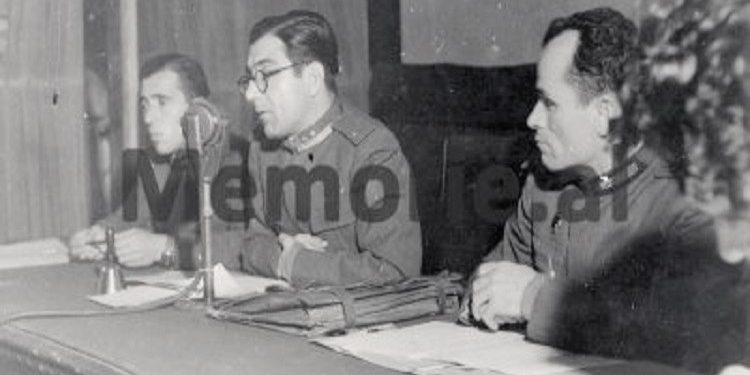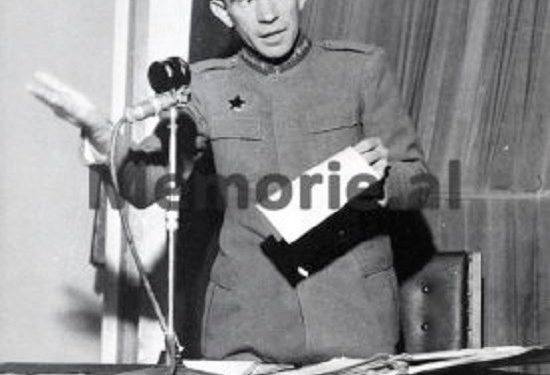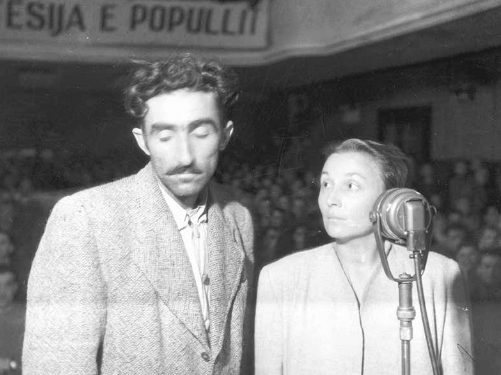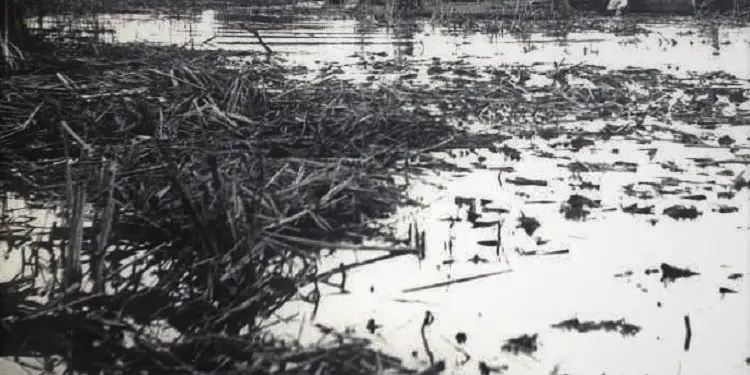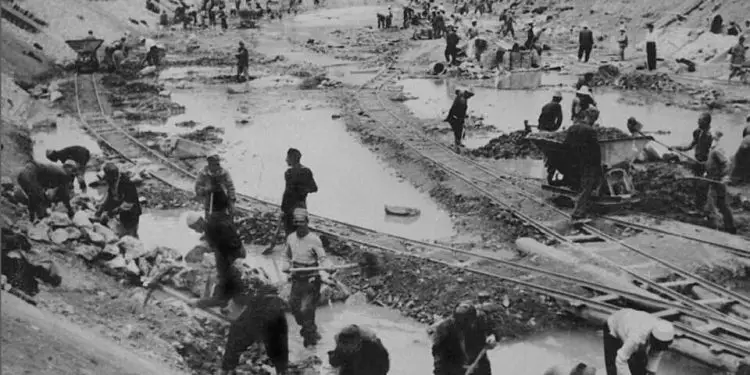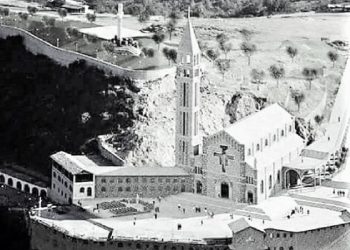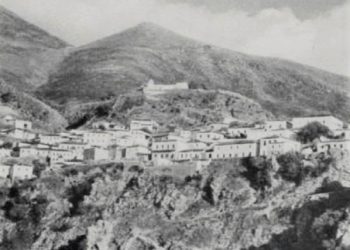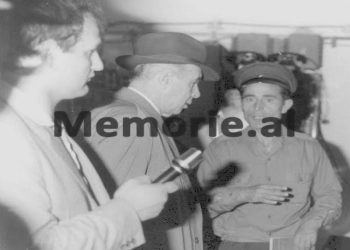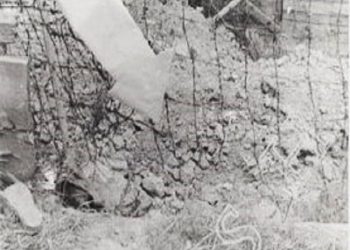By Prof. assoc. Dr. Sonila Boçi
The third part
Memorie.al / The year 1946 marked a turning point in the history of Albania, but also beyond. The contradictions between the Great Allies, the USA, Great Britain, on the one hand, and the Soviet Union, on the other, were becoming more and more apparent. The ideological war, the extension of the areas of influence and the imposition of governance systems, had caused what Wilson Churchill would consider the “Iron Curtain” to fall in Europe. This situation would directly affect even a small country, like Albania.
Continues from the previous issue
Reflections on a process that should not have happened!
The trial against the engineers and technicians of Kêneta i Maliqi is a process that prompts a deep reflection on the justice system during the communist regime, but also on the relations of this regime with individuals. Without going into a legal analysis of the process, I cannot help pointing out some facts, easily recognizable:
First, during the investigative and judicial process, in no case was any concrete evidence presented. There was talk of gatherings and meetings of the “group of saboteurs”, but no evidence was given about the conversations held in these meetings. All the accused spoke in general terms and repeated each other exactly.
Likewise, no evidence was given on the meetings of the members of this “group” with the member of the American Mission in Tirana, Harry Fultz. Since the State Security closely followed the entire movement of Mr. Fultz, and even his daughter Joanna, it would not be difficult to find evidence of these meetings and correspondence exchanges.
Secondly, during the process, a very large number of documents and letters of exchange were not taken into account, which prove that during the months of May-September, the accused repeatedly raised the issues related to the difficulties, sometimes insurmountable, that they encountered in their daily work.
They did not take into account the conclusions of the Special Control Commission, which admitted that the preventive measures on the daily work rates of a worker were exaggerated, that the preliminary projects had had wrong calculations, and even that the date for the completion of the works for draining the swamp of Maliqi, was very optimistic.
Third, the court did not consider in depth the contradictions arising from the statements of the accused, which would be disturbing to any reasonable person. In fact, they were disturbing even to the top communist leaders. Nako Spiru, would complain to the Soviet ambassador in Albania, D. Çuvah, about the incompetence of the investigators of the case of Maliqi’s engineers, who, according to him, had turned the process into a joke.
Fourth, the judicial process emphasized the meetings of engineers Sharra and Beqiri with Fultz, since April 1945, when both engineers were engaged in the reconstruction of several bridges and other works in Albania. The question arises: If Fultz’s request was to sabotage, then why didn’t these engineers also sabotage these works, which were carried out before, then the drying of the Maliqi swamp?
All those who have the chance to read the documents on Maliq’s process, do not have a hard time understanding the manipulations found in it. What should be analyzed are the reasons why such an organized process served the regime in Albania. As mentioned at the beginning, 1946 was the year in which the mask of the regime fell.
While, until then, to convince the Western Allies, to recognize the new regime and to ensure maximum support in the elections of December 2, 1945, the regime had been somewhat more careful, now, it no longer needed to hide the intentions of his. He set to work to implement his economic and political program, an important part of which was the implementation of class warfare, which translated into the elimination of all declared or potential opponents.
During 1946, a series of court proceedings took place, including the trial of high Catholic clerics, or the trial of the “social-democratic”, “monarchist” and “resistance” group, which included some of the most prominent intellectuals. prominent in place, as; Musine Kokalari, Gjergj Kokoshi, lawyer Fuad Asllani and many others.
The evidence of foreign missions, which were in Albania at that time, speak of numerous movements of Albanian military troops towards the North of the country, to put under control the groups of opponents of the regime. The regime in power saw people educated in the best universities in Europe as its real opponents and was very aggressive in neutralizing them. Undoubtedly, the engineers convicted in the Maliqi trial also belonged to this category.
The drying of the Maliqi swamp was an extraordinary undertaking, which would have an impact both on the country’s economy and on the increase in the prestige of the Albanian government among the people. Not in vain, the official propaganda had trumpeted the action to drain this swamp without ceasing, and the highest party officials followed the developments of the works with special concern. Time showed that the project exceeded the real possibilities of the Albanian state at that time.
The lack of machines, of qualified workers, the incompetence of local leaders, the start of works not at the right time, were the main reasons that the drying of the Maliqi marsh could not be completed in the specified time. This is so true, that even in the following months of the infamous trial of Maliqi’s engineers and technicians, the difficulties that had conditioned the low yield of the works continued to exist and the work rates were far from what was required.
The works to dry the Maliqi marsh continued beyond 1946. The first phase of the works could not be completed before 1948. While the complete drying of the marsh was not possible even during the 50s. In 1959, a decision of the Political Bureau of the Central Committee of the ALP announced the application of a project by a Russian engineer, who would realize the final stage of drying this swamp.
The accusation and punishment of Maliqi’s engineers and technicians was simply a mechanism to camouflage the failure of the Albanian government in the completion of such a major project. On the other hand, it would serve to frighten the population and make them humbler to the orders of the political leaders. It was not in vain that Maliqi was chosen as the place of execution of those sentenced to death.
Finally, the Albanian government could use this process to justify its policy towards the USA. During 1946, the tendencies of the Albanian government towards Tito’s Yugoslavia and the Soviet Union were quite obvious.
Meanwhile, relations with the West were becoming more and more tense. The incidents in the Corfu Channel finally determined the relations of the Albanian government with Great Britain. While relations with the USA continued to be more ambiguous. Enver Hoxha, in several public appearances during 1946, had criticized the position of the USA for not accepting Albania in the UN, as well as the American vote to allow the presentation of Greek claims to be included in the agenda of the Peace Conference. , towards South Albania.
Official propaganda had undertaken an extensive campaign to discredit the American Civilian Mission in Tirana and its members. Since the beginning of 1946, the members of this Mission were almost completely isolated from contacts with ordinary people, while relations with Albanian officials were also limited.
Under these conditions, seeing the Albanian government’s pro-Soviet tendencies and its ongoing behavior towards the USA, the State Department decided that it would not be appropriate to recognize the Albanian government.
On November 2, 1946, the American Civil Mission in Tirana asked the Albanian government for permission to leave Albania. This marked the final severance of relations between the two states. As for the accusations against Maliqi’s engineers and their agent connection with the USA, they are not justified by the documentation consulted so far.
The State Department asked for clarification on the accusations made by the Albanian government against Mr. Fultz and the American Civil Mission. Both Fultzi and other members of the Mission have denied having anything to do with the accusations leveled against them in the trial of Maliq’s engineers and technicians. So far, we have no data that implicates Harry Fultz in this process.
The process of Maliq cost the lives of seven qualified people, who had shown their ability and commitment to the development and progress of Albania. It was the beginning of a long ordeal of suffering for all the convicts and their families. Unfortunately, this was just one episode of many, many others that cost Albania, the country’s intellectual elite.
None of us can go back in time to correct the injustices of yesterday, but we have a very important mission: To objectively and impartially analyze the evidence and facts of the past, so that we do not we allow ourselves and society to make the same mistakes again. Memorie.al




